#expo 1964
Text

New York Hall of Science at the 1964 World's Fair in New York, USA, by Wallace K. Harrison & Max Abramovitz. Photo by Ezra Stoller.
#1960s#expo 1964#concrete#architecture#usa#architektur#max abramovitz#wallace k. harrison#ezra stoller
237 notes
·
View notes
Photo
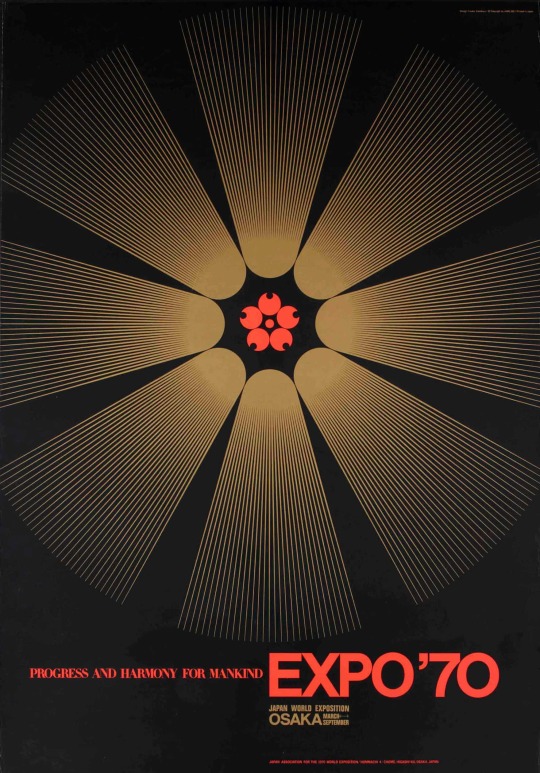
Expo ’70, 1967, Yūsaku Kamekura
In 1970, after the positive international response to the 1964 Tokyo Olympics, Japan hosted its first World Expo, attracting a record 64 million visitors. Kamekura’s winning design for the official poster for overseas use depicts his minimalist, geometric interpretation of the five petals of a cherry blossom – a culturally resonant symbol of Japan, prized for its ephemeral beauty
Photograph: The Merrill C Berman Collection
#yusaku kamekura#artist#art#illustrator#poster#expo '70#japan#1964 tokyo olympics#world expo#culture#the merrill c berman collection
5 notes
·
View notes
Text

Miku Expo 1964
#animation#hatsune miku#miku expo 2024#toon#rubberhose#krita#krita animation#miku expo#yeah i went to the vancouver show. the led was a shock to say the least.#anyway this website refuses to load properly for me so don't expect me here or my personal acc still.
164 notes
·
View notes
Text
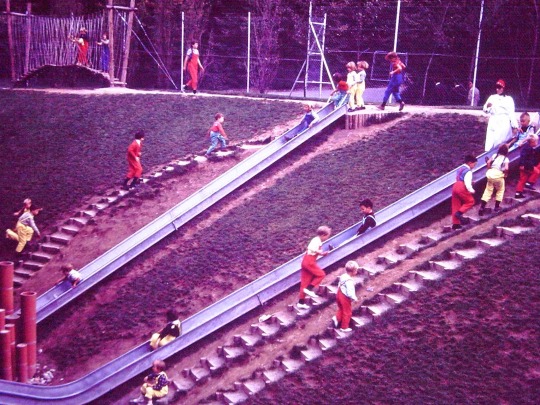

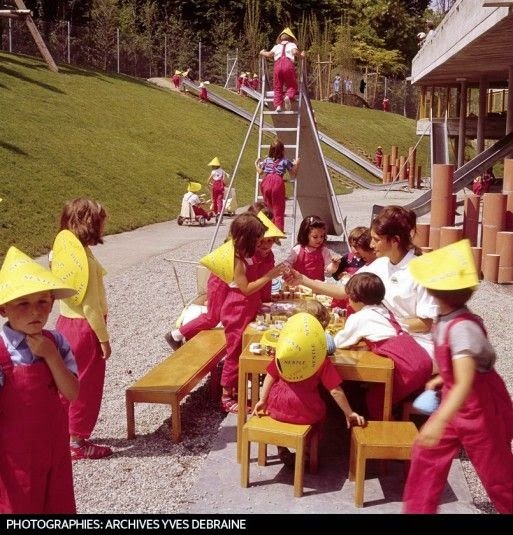



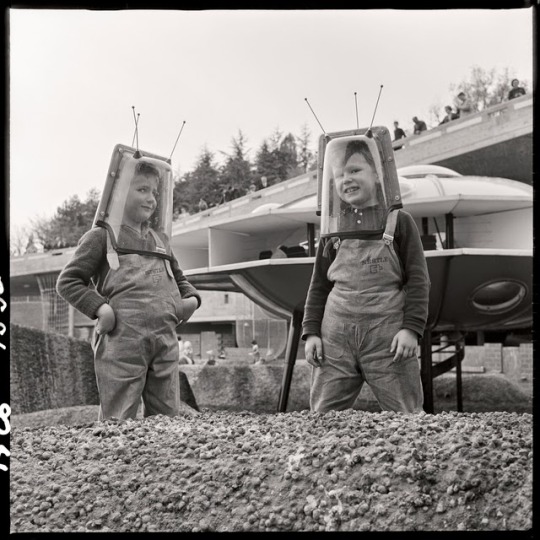
Some images from the Nestlé sponsored children's pavilion at Expo 64, the Swiss National Exhibition 1964 in Lausanne. The playground was apparently based on concepts of the adventure playground. The elegant concrete roof by architect Michel Magnin is among the very few structures from Expo 64 still standing today. The other one is a part of Max Bill's pavilion, now the Théâtre de Vidy.
from the Dispokino blog
97 notes
·
View notes
Text

Posted by Tony on IG.
Expo Stanley Kubrick. (Dr. Strangelove 1964)
2 notes
·
View notes
Photo

Expo 64, Lausanne, 1964. From the Budapest Municipal Photography Company archive.
27 notes
·
View notes
Text
one of the more niche things i like to focus on for countries are international events! specifically world fairs and the olympics.. fun fact, at the final world fair before ww2, which started in 1939, many major players in the upcoming war had pavilions. during the time not all countries participating had pavilions which makes this a huge coincidence. a little list with sources for all major ww2 players that had pavilions at the 1939 world fair: britain, france, italy, japan, the ussr, the usa (the hosts that year lol), and poland! some others who had pavilions that year: greece, (jewish) palestine, the netherlands, the pan american union, as well as sweden :-)
there was also a special train line made for the occasion since the 7 train (which stops in pretty much the same location as flushing park #iirc) didn't have that stop yet. it was called the world's fair line and only existed for the 2 sessions of the world fair LOL. it also costed more to ride so it was sort of just some niche thing for tourists. anyways the US did host again in 1964 but that was way more disastrous to the point defunctland made a video on it so LOL
i do recommend looking more into world fairs!!! its a really beautiful cultural exhibition and they happen every 5 years or so nowadays. the next one is in osaka in 2025 and has a very silly (/pos) logo and i am VERY excited to see it!!! the last one was in 2021-2022 (meant to be in 2020 but covid happened lol) in dubai and it was the first where EVERY participating country had a pavilion! which i think is neat.. anyways rant over go look at world fairs/expos and other international festivals :D:D:D
#essen talks#did i mention that my certified autism stereotype interest is trains#because it is <3#i think theyre awesome
6 notes
·
View notes
Text
70s Japan Trends Through the Music Charts (Part 2)
During the 1970s, the Japanese music industry was in the process of forming its identity. In addition to mirroring the musical preferences of the nation, the charts also served as a reflection of the prevailing societal trends and ambitions of that era. In this series, we chronicle the most significant musical trends of the decade.
70s Japan Trend Through the Music Charts (Part 1)
Trend #4: The Impact of Discover Japan
In 1970, Osaka hosted the World Expo, marking a significant milestone for post-war Japan following the 1964 Tokyo Olympics. To accommodate the influx of visitors, the government expanded the rail network, enabling over 60 million people—half of the nation's population—to journey to the World's Fair. However, as the Expo drew to a close after six months, concerns arose about the railways becoming obsolete. So, with the help of the ad agency Dentsu, they devised a campaign to stimulate domestic tourism by rail. The result was "DISCOVER JAPAN," one of the most iconic campaigns of the decade (which, curiously, was partially inspired by Ivy Fashion brand VAN).
"DISCOVER JAPAN" profoundly impacted Japanese society by popularizing solo travel and igniting domestic tourism, particularly among young women who ventured out on their own. This trend was further fueled by the launch of the first female fashion magazines, AnAn and Non-no, both of which extensively covered visits to charming cities across the country. Cities known as "Little Kyoto," which retained their Edo Period architecture and charm, were particularly attractive to these travelers.
Influenced by fashion magazines, these trend-conscious women journeyed to towns throughout Japan, earning them the moniker "AnNon" (a fusion of AnAn and Non-no). Their impact during the 1970s was significant enough to be mentioned in a song by Sada Masashi, one of the decade's prominent folk singers.

"DISCOVER JAPAN," the print and TV campaign devised by Dentsu, is one of Japan's most successful and era-defining marketing campaigns.
Sada Masashi rose to fame in the early 1970s as part of the folk duo Grape before launching a successful solo career. In 1977, his song "Ehagakizaka," which paid tribute to his hometown of Nagasaki, mentioned identically dressed stylish young girls in denim, clutching AnAn and Non-no magazines while photographing their surroundings. This song vividly captured the aspirational girl culture of the 1970s, characterized by "healing" domestic trips in pursuit of tranquility and small pleasures, hippie and boho-inspired fashion, and folk music as the soundtrack.
Masashi Sada's song and the AnNon-zoku tribe aside, "DISCOVER JAPAN," had an immense impact on different layers of Japanese society. And that included the music charts. In 1971, the two best-selling singles, "Watashi no joka-machi" by Rumiko Koyanagi and "Shiretoko ryojou" by Tokiko Kato, surpassed 1 million copies sold. Both perfectly embodied the campaign's spirit in highlighting the hidden beauties of Japan.
"Watashi no jokamachi," or "My Castle Town," marked Koyanagi's explosive debut, selling over 1.3 million copies. This enka-infused kayokyoku ballad paid homage to cities with Edo-like architecture, often centered around a feudal lord's castle, evoking a peaceful, melancholic atmosphere in its lyrics. Rumiko continued to sing about regional Japan's charms the following year with another hit, "Seto no Hanayome" (The Bride of Seto). Meanwhile, the folk-inspired "Shiretoko ryoujou" (Shiretoko Journey) celebrated the unique beauty and culture of the Shiretoko peninsula on Hokkaido Island.
In the same year, other artists also succeeded by spotlighting provincial Japan. Enka superstar Shinichi Mori delved into this theme with "Boukyou" (Nostalgia). At the same time, Yuuko Nagisa found success with a Japanese rendition of The Ventures' "Kyoto Doll," titled "Kyoto no Koi" (Love in Kyoto). She would go on to have another top-selling single with her version of another Ventures song, "Reflection in Palace Lake," transformed into "Kyoto Bojo" (Kyoto Longing).
Trend #5: The Legend of Momoe Yamaguchi
"Aidoru" or "idols" are cute girl/boy-next-door types who sing, dance, act, host TV shows, and star in countless commercials. They stand as one of the cornerstones of the thriving multi-billion yen Japanese entertainment industry. The 70s was an essential era for consolidating this type of star. And one idol, in particular, shone the brightest: Momoe Yamaguchi.
Momoe is a legendary star and an example of an "aidoru" who excelled at everything, exuding sophistication, talent, and sex appeal. The fact she retired from public life at the height of her fame cemented her mythical status.

Momoe Yamaguchi in her prime, the idol industry's gold standard.
In 1972, at the tender age of 13, Yamaguchi auditioned for the talent search TV show "Star Tanjou!" (A Star is Born). Her crisp singing voice and mature beauty immediately captured the industry's attention. Hori Production, the entertainment agency, and Sony CBS label swiftly recognized her potential and signed her. In May 1973, five months after her televised audition, she made her official debut with the single "Toshigoro" (Adolescence). Although Sony had a history of immediate success with newcomers, Momoe's first single received a tepid response, so her label decided to court a bit of controversy for her sophomore outing. "Aoi kajitsu" (Ripe Fruit) had the innocent-looking 14-year-old girl singing, "you can do whatever you want to me, even if they say I'm a bad girl." The racy lyrics worked, and the single was a success.
A few months later, Yamaguchi's backers repeated this formula with "Hito natsu no keiken" (One Summer Experience). The song began with a suggestive promise: "I'll give you the most precious thing a girl has." The lyrics were laden with double entendres, describing a "sweet trap of temptation" that can only be experienced once. She sang, "if the person I love is pleased, then I'm happy. I don't mind if you break it," which could be understood as a reference to a girl's heart or hymen.
The single was an explosive hit, propelling 15-year-old Yamaguchi into the A-list. For the remainder of her career, she was frequently asked about the "most precious thing a girl has," to which she'd always offer a stern-looking reply: "Her devotion."
The young, mature-looking girl singing thinly veiled songs about sexual awakening with a dark, serious-looking image set her apart from the prevalent happy-go-lucky idol aesthetic. However, it wasn't merely reliance on gimmicks that transformed her into a legend. In 1976, after firmly establishing herself as a star, she parted ways with her frequent collaborators, lyricist Kazuya Senke and composer Shunichi Tokura. Beginning with the single "Yokosuka Story," she partnered with the husband-and-wife duo Yoko Aki and Ryudo Uzaki.
Ryudo Uzaki, the frontman of the popular enka rock band DOWNTOWN BOOGIE WOOGIE BAND, infused her kayokyoku tunes with a rock edge. Through her lyrics, Yoko Aki redefined Momoe's image as a confident, clear-eyed girl transitioning into womanhood. Sony initially opposed Momoe's desire to collaborate with Aki and Uzaki, but the partnership ultimately helped her reach her commercial peak.
"Yokosuka Story" was Momoe's first single to reach the number 1 spot on the weekly charts. The Aki-Uzaki duo penned several other hits for her, including "Playback Part 2" and "Sayonara no mukougawa" (The Other Side of Goodbye), and opened doors for her to collaborate with other luminaries of Japanese music. Two of her most memorable hits, "Cosmos" and "Ii hi tabidaichi" (Beautiful Day Departure), both released in 1978, were penned by folk superstars Masashi Sada and Shinji Tanimura of Arisu, respectively. The latter became the theme song for the iconic DISCOVER JAPAN TV commercials.
Speaking of commercials, idols worth their salt can't limit themselves to music. Momoe earned millions as the face of Toyota cars, Fujifilm photographic films, Casio watches, and Glico confectionary products, among others. She also starred in highly rated TV dramas and ventured into the world of film.
Starting in 1974, she appeared in two romantic films per year, always paired with Tomokaza Miura as her co-star. While Momoe pursued various ventures, Miura's acting career primarily revolved around being her on-screen romantic partner. Their undeniable chemistry and the box-office success of their films led to them being known as the "golden combination."
In a concert at the end of 1979, Momoe stunned her audience by revealing that her on-screen partner, Miura, was her real-life boyfriend. In a subsequent press conference in March of the following year, she confirmed her intention to marry him and retire officially. In September, she released her autobiography, which sold over 1 million copies in a month. In October, she bid farewell through a series of TV specials and a concert at Nippon Budokan. Her farewell concert reportedly earned Hori Productions over 20 million dollars, according to figures provided by the agency to Billboard magazine at the time. Momoe's success allowed HoriPro to become one of the best-established entertainment agencies in Japan, a position it still holds today. Her final performance took place at HoriPro's 20th-anniversary event, where she sang "Ii hi tabidaichi." In November, she married Miura and disappeared from the media.
The Japanese public obsession with her never waned. Paparazzi tried to capture her at her son's kindergarten graduation ceremony and doing classes at a local driving school. Many speculated she'd eventually come out of retirement. She never did, which only helped feed the obsession around her.
During the 1970s, Yamaguchi enjoyed immense success, but she was one of many popular female idols. The narrative created by her retirement elevated her to the status of a larger-than-life legend. She became the gifted, beautiful young woman who succeeded as a singer, a TV actress, and a movie star before choosing the ultimate happy ending: marriage. By choosing love, Momoe Yamaguchi, the legendary idol, transformed into an ordinary woman—a real-life fairy tale that resonated deeply with Japanese society.
Her decision was driven by profound motivations. Momoe revealed in her autobiography that she was raised by a single mother, the product of an extramarital affair. Her challenging upbringing and her father's late appearance to capitalize on her fame instilled a deep desire for a traditional, happy family life. She also grew weary of the relentless demands of stardom and the repetitiveness of performing the same songs. Thus, she made a heartfelt choice to relinquish fame and public life to give her husband the most important thing a girl has: her devotion.
Trend #6: Idols' Rise
The term "idol" in the Japanese entertainment industry finds its origins in the French film "Cherchez l'idole" (1963), which enjoyed immense popularity in Japan. Initially, "Aidoru" was used to describe the film's star, Sylvie Vartan, before it evolved into a general term to describe youthful-looking triple-threat domestic stars.
Before the coining of the term, "idol-like" stars had already existed. In the 1930s, Machiko Ashita attracted crowds to the Moulin Rouge Shinjuku and served as the face of several brands. In the 1950s, rockabilly stars enjoyed massive popularity among the youth, and the 1960s saw the rise of manufactured "group sound" bands and the female duo The Peanuts, comprised of twin sisters. Legendary stars such as Hibari Misora, Sayuri Yoshinaga, Teruhiko Saigo, Yukio Hashi, and Kazuo Funaki thrived as both movie stars and successful singers.
However, the 70s marked the consolidation of the "idol" aesthetic and career path, paving the way for the "golden era of idols" in the next decade. Essential for it to happen was the widespread adoption of the medium where idols shine the brightest: television.
TV allowed entertainment agencies to aggressively push their young, fresh-faced talents in front of a broad audience. They populated music and variety shows, commercials, and dramas. They were immaculate, life-sized stars ready to play the part of the nation's sweethearts.
Although history has crowned Momoe Yamaguchi as the ultimate 70s idol, she was just one among many during most of that decade. A closer examination of the numbers reveals that Mari Amachi, a female idol, had the most significant short-term impact during that time.
Amachi was first introduced on the popular TBS TV drama "Jikan desu yo" (It's Time) in 1971, playing "Tonari no Mari-chan" (Next Door Mari-chan). She played the minor role of a cute girl who lived close to the show's primary setting, a family-run public bathhouse, and often appeared by her window, playing guitar and singing. By October, with the backing of the biggest entertainment agency of the era, Watanabe Production, and Sony CBS, 19-year-old Mari Amachi officially debuted with the single "Mizuiro no Koi" (Light Blue Love). It was a hit—the first of many. Mari would be 1972's best-selling act, achieving high sales with four albums and five singles.
Mari's image, characterized by an innocent aura, a happy-go-lucky personality, and frilly dresses as stage outfits, became the prototype for female idols. Her short hair and chiseled smile earned her the nickname "Sony's Snow White," evoking the image of a fairytale princess. Unsurprisingly, she was particularly popular with children, leading Watanabe Pro to license her likeness for various goods, including the coveted "Do-Re-Mi Mari-chan" Bridgestone Cycle bicycle, highly sought after by young girls in the early 70s.
Despite her rapid rise to fame, Mari's time at the top was short-lived. By 1974, another Watanabe Pro idol, Agnes Chan, was already surpassing her in sales. In 1977, Mari's health deteriorated, and she took a lengthy hiatus, officially attributed to thyroid issues but later revealed to be depression triggered by her waning popularity. In 1979, she attempted a comeback, even bagging an endorsement deal for an ultrasonic facial device, one of the year's hit items for women. But her time had passed and she didn't find much success. Eventually, Mari's career took unconventional turns, including involvement in a softcore porn movie, the release of nude photobooks, and a transition to becoming a "fat" talento (TV personality), followed by a weight-loss book.
In 2015, in her last public interview, she revealed that, at 63, she was living in a retirement home in the Tokyo suburbs. Her fan club covered her expenses, while her daughter provided a modest weekly allowance. This marked a stark contrast to her glamorous peak years and serves as a reminder of the challenges idols face in the Japanese entertainment industry, particularly women, and how easily discardable idols can be. It also shows how wise Momoe Yamaguchi was, bowing out gracefully at the right time.
However, Momoe Yamaguchi and Mari Amachi represent two extremes within the realm of idols. While Mari achieved record profits for two years before facing decline and eventual obscurity, Momoe maintained relevance for nearly a decade before choosing to marry her on-screen partner, retire, and become a living legend. Most other 70s idols did not experience such remarkable destinies.
In 1971, two other young idols, Rumiko Koyanagi and Saori Minami, made their debut alongside Mari Amachi. The trio was collectively known as the "shin sannin musume," or the "three new girls." Their joint concert at the Budokan on Christmas of 1972 solidified their shared nickname.

The Shin San-nin Musume. Clockwise: Rumiko Koyanagi, Mari Amachi, and Saori Minami.
Rumiko Koyanagi had her skills honed at the Takarazuka Music School. Takarazuka is a very traditional, all-female theater group, and their training academy is known to be highly rigorous and selective. Koyanagi graduated top of her class but wanted something other than a musical theater career. Instead, her goal was to debut as a solo singer. So she left the Takarazuka Revue and signed with Watanabe Pro and Warner Pioneer label to fulfill her dream. Her first song, "Watashi no joka-machi" (My Castle Town), buoyed by the "Discover Japan" boom, surpassed 1 million copies sold, becoming the best-selling single of 1971.
Rumiko's repertoire predominantly featured enka-influenced kayokyoku. Her classical sound may not have been as appealing to the youth as some of her peers' slightly more modern tunes, but it ensured her stable sales throughout the decade. In her sixties, Rumiko has reinvented herself as a passionate soccer fan and a glamorous senior lady, sharing lifestyle tips and her love for Chanel and Lionel Messi on Instagram. She also conducts dinner shows, a lucrative type of intimate concert usually held at luxury hotels, where fans pay hefty prices to enjoy a multi-course dinner while listening to nostalgic hits.
The third "shin sanin musume" is Saori Minami. Minami didn't have a million-selling debut like Rumiko, nor did she become an instant sales behemoth like Mari. That didn't mean she was less impactful. Quite the opposite. Hailing from Okinawa, still under US occupation during her debut, Saori impressed Japan with her exotic beauty. In 1971 and 1972, she outsold every other female idol in bromide sales. Bromide is the local terminology for photographic portraits of celebrities, and historically, its sales are the best way to gauge how popular an idol is.
Her first single, "17-sai" (17 years old), became a classic and enjoyed enduring popularity, with several artists covering it over the decades. After retiring in 1978 upon her marriage to legendary photographer Kishin Shinoyama, Saori made a comeback in 1991 but has made only sporadic public appearances since then.
Two years after the emergence of the "shin sannin musume," a new trio of newcomers known as the "Hana no Chuusan Trio" or the "Chuusan's Flower Trio" (a reference to the fact all of them were in Chuusan, the third year of middle school) came into the spotlight. Masako Mori, Junko Sakurada, and Momoe Yamaguchi were all revealed in the talent search TV show "Star Tanjou" (A Star is Born). In 1975, by the time they were in their second year of high school (kou 2), they co-starred in the successful film "Hana no Kou 2 Trio."
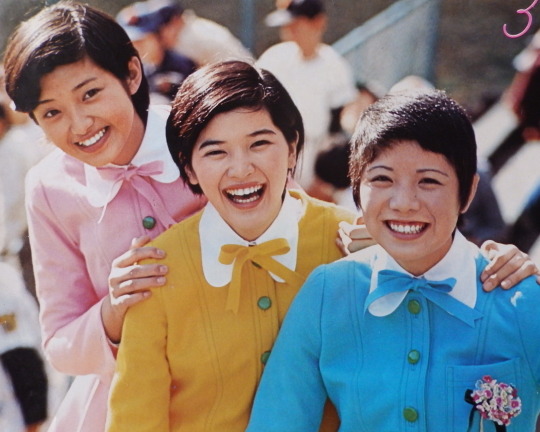
The Hana no Chuushan Trio: Momoe Yamaguchi, Junko Sakurada and Masako Mori.
At 13 years old, Masako Mori secured her place as the inaugural "Star Tanjo" grand champion in 1971. The following year, she debuted under Hori Production and swiftly soared to success. Mori's music was deeply influenced by enka, and by the end of the decade, she had solidified her status as a fully-fledged enka star. In 1986, she tied the knot with enka superstar Shinichi Mori, leading her to retire from the entertainment scene. However, in 2005, following her divorce, the former idol made a comeback, embarking on tours and participating in TV dramas for a few years before ultimately deciding to bid farewell to her career once more on her 60th birthday in 2019. Notably, she shares three children with Shinichi Mori, including TAKA, the lead vocalist of the famous rock band ONE OK ROCK.
Junko Sakurada clinched victory at "Star Tanjo" in 1972 at 14. Subsequently, she signed with Sun Music agency and Victor Music, marking her official debut in February 1973 with the release of "Tenshi mo yumemiru" (Angels Also Have Dreams). Given their similar age, niche, and close debut dates, the industry and some fans pitted her against Momoe Yamaguchi despite their behind-the-scenes friendship. Both idols enjoyed substantial popularity, with Yamaguchi usually holding an edge in sales. The exception was in 1975 when Junpei, as fans affectionately knew her, dominated as the best-selling female idol in music and bromide sales.
In addition to her music career, Junko excelled as an actress. In 1983, she opted to conclude her singing career to dedicate herself solely to acting. A decade later, in 1993, the former idol shocked Japan by announcing her participation in a mass wedding ceremony organized by the controversial South Korean Unification Church at the Olympic Stadium in Seoul. Her husband had been chosen for her by the church.
Her association with the cult brought her career to an abrupt halt. With her image becoming closely linked to the church, TV networks and advertisers distanced themselves from her. Consequently, Junko relocated from Tokyo, devoting herself entirely to her faith and family. Since then, she has made a few comebacks. In 2006, she published a highly-publicized essay book, and in 2013, she celebrated the 40th anniversary of her debut with a special concert. In 2017 and 2018, she returned to the stage, coinciding with her musical comeback and the release of a new album, "My Ideology."
After this project, Junko has remained out of the spotlight, with an official return unlikely unless she completely renounces her ties with the United Church. The cult's controversial image became even more repellent following the murder of former Prime Minister Shinzo Abe in July, committed by a young man who attributed his family's financial and psychological turmoil to the church. Consequently, the cult's unethical financial practices and ties to the ruling Liberal Democratic Party have become widely discussed topics in the country. For Junko Sakurada, her affiliation with the cult has overshadowed her otherwise successful decades-long career.
Completing the trio alongside Junko and Masako was Momoe Yamaguchi. Although Yamaguchi's career has eclipsed that of almost every other idol of the 1970s, she initially experienced the least success among the three young girls. Unlike her peers, both of whom had claimed grand champion titles at "Star Tanjou!," Momoe secured second place at her final showcase. Moreover, her debut single was the poorest-selling among the trio. However, she would ultimately emerge as the definitive idol, and her retirement would serve as the perfect conclusion to an epoch-making career.
While Momoe, Junko, Masako, Mari, Agnes, Rumiko, and Saori, among others, collectively set an impressive precedent for future female idols, male idols also played a significant role in the era. In terms of profitability, male idols reigned supreme, thanks to the unwavering loyalty of their female fanbase.
Johnny Kitagawa, the late founder of Johnny's Jimusho, eventually became the most influential figure in the entertainment industry. He monopolized this niche for decades with his boybands. However, during the 1970s, Kitagawa was just one among many. Although his agency achieved considerable success with the boyband Four Leaves, it was soloist Hiromi Go who briefly held the nation under his sway between 1973 and 1974. Unfortunately for Kitagawa, this period of dominance proved fleeting, as Go departed for another agency in 1976, signaling that Johnny Kitagawa still had much to accomplish to solidify his authority.
With Johnny's domination still on the horizon, Hideki Saijo emerged as the most influential male idol of the 1970s. Saijo enjoyed success with several hit singles, including the ballad "Chigireta Ai," released in 1973, and 1979's "Young Man," a cover of Village People's "Y.M.C.A." Demonstrating the power of devoted fangirls, Saijo became the first domestic solo artist to perform a concert at Nippon Budokan. His popularity quickly transcended the Budokan, propelling him to the status of a stadium headliner and solidifying his position as the decade's top concert ticket seller.
The loyalty of fangirls meant that male idols consistently outperformed any act in ticket sales. In the 1960s, The Tigers, considered one of the pioneers of the "group sound" movement and regarded by many as Japan's first idol group, became the first domestic act to hold a stadium concert. By the following decade, the "group sound" era had ended, but some former band members successfully transitioned into solo careers.
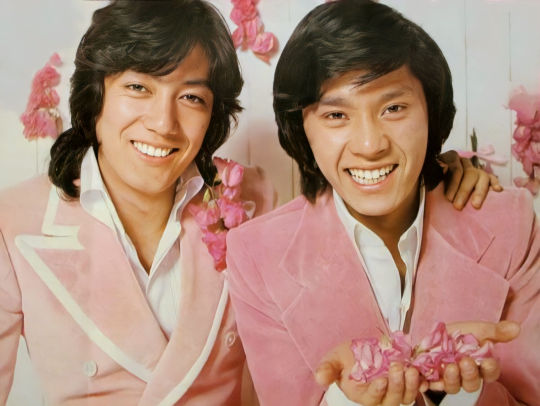
Kenji Sawada and Hideki Saijo, the two stadium-selling male idol superstars from the 80s.
Kenji Sawada, the former lead vocalist of The Tigers, remained a constant presence on the charts throughout the 1970s. Under the guidance of the influential Watanabe Pro agency, Sawada succeeded as a singer and actor. He brought a rockstar aura to his performances, incorporating impactful and extravagant visual elements and pioneering the use of makeup, drawing inspiration from David Bowie and glam rockers. In doing so, Sawada laid the groundwork for visual kei, a movement that would revolutionize Japanese rock in the late 1980s and early 1990s. Nicknamed "Julie" since his early days in the 1960s due to his admiration for Julie Andrews, Sawada continues to thrive as a prominent music figure in Japan, one of the few stars from that era still capable of selling out stadiums.
While girls' adoration often paves the way for male idols to enjoy lengthy careers, there are exceptions to this rule. In 1974, Finger 5 became one of the best-selling idol groups in the country. Comprising five young brothers from Okinawa, they were marketed as Japan's response to the Jackson 5 and consistently churned out hit singles. However, just two years later, their popularity took a nosedive. Several factors contributed to this decline, notably their heavy reliance on the two youngest members, aged only 10 and 12. These youngsters not only grappled with exhaustion from relentless work schedules but also faced the challenges of puberty, causing their voices to change and preventing them from hitting the right notes in their songs. Consequently, Finger 5 lost its appeal.
Finger 5's brief career underscores a crucial aspect of the idol industry: the importance of youthfulness. In Japan's gender-biased society, some male idols from the 1970s were granted the opportunity to age gracefully, evidenced by a few who maintained success well into their 60s and 70s. In contrast, female idols invariably confronted the pressures and inevitable decline associated with aging.
This brings us back to the quintessential idol of that era, Momoe Yamaguchi. By choosing to retire and steadfastly resisting any temptation to reenter the public eye, Yamaguchi effectively became frozen in time at 21 years old, her age at the moment she bid farewell to both showbiz and the public. This solidified her status as a legendary and unattainable icon—an idol who never aged.
70s Japan Trends Through the Music Charts (Part 3)
#enka#kayokyoku#momoe yamaguchi#70s japan#1970s#japanese music#jpop#discover japan#heibon punch#kenji sawada#hideki seiji#junko sakurada#70s idols#finger 5#mari tenchi#rumiko koyanagi#saori minami#four leaves#hiromi go
18 notes
·
View notes
Text

Actress Hashimoto Kanna will star in a TV Asahi 65th anniversary drama “Banpaku no Taiyo” which is based on the 1970 Osaka Expo and will broadcast in March 2024.
In 1970 (Showa 45), the Japan World Exposition (Osaka Expo’70) was held for the first time in Asia, with the theme of “Progress and Harmony of Humankind” and attracted 76 countries (and 4 other international organizations, One government office, six states, three cities, and two companies) participated, and the number of visitors was approximately 64.22 million, equivalent to 60% of the nation.
The huge festival, which generated unprecedented enthusiasm and became a national event symbolizing Japan’s high economic growth, has been made into a drama with the super-luxury collaboration of Scriptwriter Nakazono Miho and starring Hashimoto Kanna. The story of the heroine’s youth and her family, who dreamed of working at the World’s Fair with the desire to connect with people all over the world, is delivered as a human home drama with a heartwarming touch.
The 1960s were in the midst of a period of high economic growth after post-war reconstruction. In this era when everyone was striving for a “better life,” the main character, Asano Kyoko (portrayed by Hashimoto), could not forget the excitement of the Tokyo Olympics (1964/1964) and began to yearn for “a place that connects with the world.” While staying at a relative’s house in Osaka, she began to develop her feelings for the Expo.
She grows up with encouragement and conflict from her freeloading family, and she realizes her dream of interacting with people from all over the world as a companion at the Expo. The film energetically depicts the passion of the heroine, Kyoko, and other characters who were involved in the Expo in various ways, as well as her family’s strong lives during the turbulent Showa era.
Hashimoto, who has recently started working on the series, said of the appeal of the work, “The most interesting part is about a positive girl who admires the World Expo and wants to interact with people from all over the world, and she works single-mindedly towards her dreams. It’s about running. It’s exhilarating and I think it’s a very sparkling piece of work”.
Hashimoto also said, “There are people who feel nostalgic thinking, ‘There was a time like this!’ and people of my generation and those younger than me can look at it with a historical sense and think, ‘This is what Japan was like!’ . Above all, I think it’s a work that will definitely make you feel positive when you watch it. Please look forward to the broadcast in March!”.
2 notes
·
View notes
Text
The Best Baseball Players from California

The state of California has produced some of the most accomplished professional baseball players in the history of Major League Baseball (MLB). Widely regarded as one of, if not the, greatest hitters of all time, Ted Williams was born in San Diego in 1918. He played 19 seasons in the MLB, all with the Boston Red Sox. Williams led the league in runs scored six times.
Williams regularly ranked among the season leaders in runs batted in (RBI) and walks. That said, he is best known for his impressive batting average and on-base percentage (OBP). He led the league in batting average six times and finished his career with a .344 average, sixth-best in league history. He had a career OBP of .481, a league record. He received countless individual accolades during his career, highlighted by 16 All Star team selections.
While Williams excelled as an individual player, the Red Sox failed to win a World Series title during his more than two decades with the franchise, which included multiple missed seasons due to military service. Other California-born players have enjoyed greater postseason success.
Lefty pitcher Randy Johnson was born in Walnut Creek in 1963. He was initially drafted in the fourth round by the Atlanta Braves, but made his professional debut for the Montreal Expos in 1988. Johnson established himself as an ace pitcher, leading the league in win-loss percentage and earned run average (ERA) in 1995, but experienced multiple trades during the first phase of his career.
Johnson signed with the Arizona Diamondbacks in 1999 and soon became regarded as one of the league’s top pitchers. He led the league in ERA during three of his first four years in Arizona, and recorded more strikeouts than any other pitcher each of those seasons. In 2001, Johnson and Curt Schilling led the Diamondbacks against the New York Yankees in the World Series. Johnson won all three games he pitched and was named co-MVP with Schilling. He finished his career as one of the league’s most decorated pitchers, with multiple Cy Young Awards and strikeout records.
Barry Bonds is another California native who enjoyed considerable individual success but finished his career without a World Series victory. A left-handed outfielder and designated hitter, he was born in Riverside in 1964. Bonds started his career with the Pittsburgh Pirates, but played his final 15 seasons with the San Francisco Giants.
Bonds earned seven MVP awards during his career, along with eight Gold Gloves, 12 Silver Sluggers, and many additional plaudits. He took part in six Home Run Derby competitions, winning in 1996. He concluded his career with an OBP of .444, No. 7 all-time, and is the MLB career home run leader at 762.
Other notable baseball players to come out of the Sunshine State include Duke Snider of Los Angeles, Fresno’s Tom Seaver, and Mark McGwire, a Pomona native. Center fielder Joe DiMaggio was born in Martinez in 1914. He played his entire career for the New York Yankees, winning nine out of the 10 World Series he played in.
2 notes
·
View notes
Text
Events 10.29 (after 1950)
1953 – BCPA Flight 304 DC-6 crashes near San Francisco.
1955 – The Soviet battleship Novorossiysk strikes a World War II mine in the harbor at Sevastopol.
1956 – Suez Crisis begins: Israeli forces invade the Sinai Peninsula and push Egyptian forces back toward the Suez Canal.
1957 – Israel's prime minister David Ben-Gurion and five of his ministers are injured when Moshe Dwek throws a grenade into the Knesset.
1960 – An airplane carrying the Cal Poly football team crashes on takeoff in Toledo, Ohio.
1964 – The United Republic of Tanganyika and Zanzibar is renamed to the United Republic of Tanzania.
1964 – Biggest jewel heist; involving the Star of India (gem) in the American Museum of Natural History in New York City by Murph the Surf and gang.
1967 – Montreal's World Fair, Expo 67, closes with over 50 million visitors.
1969 – The first-ever computer-to-computer link is established on ARPANET, the precursor to the Internet.
1972 – The three surviving perpetrators of the Munich massacre are released from prison in exchange for the hostages of the hijacked Lufthansa Flight 615.
1980 – Demonstration flight of a secretly modified C-130 for an Iran hostage crisis rescue attempt ends in a crash landing at Eglin Air Force Base's Duke Field, Florida, leading to the cancellation of Operation Credible Sport.
1985 – Major General Samuel K. Doe is announced as the winner of the first multi-party election in Liberia.
1986 – British Prime Minister Margaret Thatcher opens the last stretch of the M25 motorway.
1991 – The American Galileo spacecraft makes its closest approach to 951 Gaspra, becoming the first probe to visit an asteroid.
1994 – Francisco Martin Duran fires over two dozen shots at the White House; he is later convicted of trying to kill U.S. President Bill Clinton.
1998 – In South Africa, the Truth and Reconciliation Commission presents its report, which condemns both sides for committing atrocities.
1998 – Space Shuttle Discovery blasts off on STS-95 with 77-year-old John Glenn on board, making him the oldest person to go into space at that time.
1998 – ATSC HDTV broadcasting in the United States is inaugurated with the launch of the STS-95 space shuttle mission.
1998 – While en route from Adana to Ankara, a Turkish Airlines flight with a crew of six and 33 passengers is hijacked by a Kurdish militant who orders the pilot to fly to Switzerland. The plane instead lands in Ankara after the pilot tricked the hijacker into thinking that he is landing in the Bulgarian capital of Sofia to refuel.
1998 – Hurricane Mitch, the second deadliest Atlantic hurricane in history, makes landfall in Honduras.
1998 – The Gothenburg discothèque fire in Sweden kills 63 and injures 200.
1999 – A large cyclone devastates Odisha, India.
2002 – A fire destroys a luxurious department store in Ho Chi Minh City, where 1,500 people are shopping. More than 60 people die and over 100 are unaccounted for in the deadliest peacetime disaster in Vietnam.
2004 – The Arabic-language news network Al Jazeera broadcasts an excerpt from a 2004 Osama bin Laden video in which the terrorist leader first admits direct responsibility for the September 11, 2001 attacks and references the 2004 U.S. presidential election.
2005 – Bombings in Delhi, India kill more than 60.
2008 – Delta Air Lines merges with Northwest Airlines, creating the world's largest airline and reducing the number of US legacy carriers to five.
2008 – A pair of deadly earthquakes hits Baluchistan, Pakistan, killing 215.
2012 – Hurricane Sandy hits the east coast of the United States, killing 148 directly and 138 indirectly, while leaving nearly $70 billion in damages and causing major power outages.
2014 – A mud slide; the 2014 Badulla landslide, in south-central Sri Lanka, kills at least 16 people, and leaves hundreds of people missing.
2015 – China announces the end of its one-child policy after 35 years.
2018 – A Boeing 737 MAX plane crashes after taking off from Jakarta, Indonesia killing 189 people on board.
2 notes
·
View notes
Text
The Dictator of Time
(De)Contextualizing the Phenomenon of Laterna Magika by Lucie Česálková & Kateřina Svatoňová, Spector Books, Leipzig, 408 pages, 417 b/w – and colour illustrations, March 2023

What does a book regarding a multimedia theatre play founded in the late 1950s Czechoslovakia do here? Well, it’s rather simple: architecture is not only the art of constructing buildings that will last (maybe) for centuries, it’s also about bodies in space, coloured lights, sound and narration. One should just remember that Charles and Ray Eames produced no less than 125 films, built a pavilion for IBM at the New York World’s Fair (1964-65) or invented a seven-screen projection system for the American Exhibition in Moscow (Glimpses of the USA,1959) to understand that architects perceived early the fun and creativity that resides in multimedia installations.


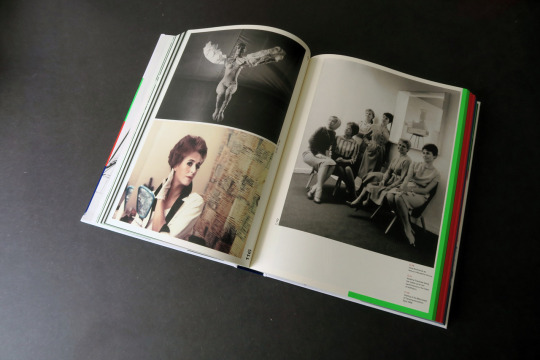
The Laterna Magika was first inaugurated in 1958 during the Expo in Brussels. (The year when Egon Eiermann and Sep Run delivered their masterpiece for the German pavilion.) It was a tool to display the technological revolutions of Czechoslovakia, but also the beauty of its citizens, landscapes, old towns and traditions. The audience was immersed in an experimental scenography, several screens floating in a space inhabited by kinetic sculptures, dancers, curtains, musicians. A multimedia show with a playful use of technology (synchronised film projectors) with a strong ideological background. (But do not all the world fairs and their national pavilions intensively deal with power, politics and propaganda?)

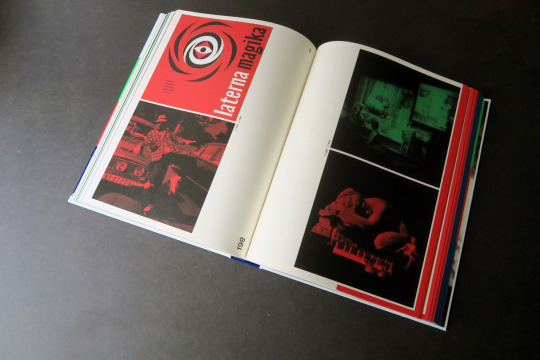

Obviously, what one finds in this book is the birth of stage design as we know it now for the Rolling Stones, Depeche Mode or Beyoncé – but also the invention of contemporary exhibition’s architecture. How many actual shows are relying on multimedia techniques to enhance the experience of the visitors when they face artworks or objects? How spectacular have become the scenes of concerts in front of 50,000 spectators in a stadium? And we tend to forget the power of those mise en scène, as they are often better than the music or art they display.

The Laterna Magika was ephemeral and temporary by nature. Even if it was showcased in Montréal, Bratislava, Leningrad, Mexico or Osaka (to name just a few), its message was transformed each time and its narration adapted with new technologies and its scenography got more complex and playful. It continued to produce performances until 2018, regularly in Prag, losing the ideological content requested by World Fairs to deal with the circus or classical dance. If one can still visit the reconstructed Barcelona Pavilion by Mies van der Rohe or see the Eiffel Tower and the Atomium from far away, there is nothing left from the different versions and presentations that took place in the different programs from the Laterna Magika…

Or no, sorry, there is one thing that allows us to dive into that story: this amazing 400-page book that contains so many archives, drawings, photographs, essays and testimonies that it brings it back to life!
Thibaut de Ruyter
-----
www.thibautderuyter.com
4 notes
·
View notes
Text
What was inside the UK national pavilion at Expo 2010? Did anyone get in there? Maybe they could pass on the inside dope? Because one thing is for sure, if ‘Anglosphere’ cultural resonances mean anything, expectations can be pitched down to sub-basement levels. Like the UK, Australia did a good — even excellent job – with the outside of its pavilion, but its exhibition was, to be brutally frank, a disgrace. Vacuous, patronizing, revoltingly sentimental, and despicably cowardly – details would be nice, of course, but actually there weren’t any — it served to perfectly illustrate the collapse of Expo, from a festival of dynamic modernization to a whining indulgence in modernity’s most destructive cultural pathologies. Where once an exhibition, whether corporate or national, boldly declared: “This is what we’re doing (isn’t it magnificent?),” now they exhaust their attenuated energies exploring new, although consistently unimaginative, ways of saying “sorry.” Narcissistic guilt flaps pointlessly about the exhibition space like a shoal of stranded fish, dying on a beach.
Incredibly, the USA pavilion was even worse. Not only was the pavilion itself a prefabricated strip-mall insult, unworthy of comparison with a second-tier Wallmart, but the exhibition inside took the obsequious pandering of the Australians to a whole new level. We wanted a space shuttle or a predator drone and they gave us Hillary Clinton saying “ni hao” plus some nonsense about planting flower-beds in the ghetto. Anyone who left this pavilion without deep and abiding detestation for everything America represented itself as being probably thinks Barney is a pretty cool guy. This was the society once capable of staging the Chicago Expo of 1893, the New York Expos of 1939-40 and 1964-5, of making incredible things and exhibiting them, of depicting a compelling vision of the future, and now … morbid Spenglerian reflections were inescapable.
[…]
The West is obviously spiraling down the drain, and what it needs, above anything, is some inspiring competition. In particular, and in 2010, it needed a western Pacific Rim, full-throttle development, blazing-a-path-to-the-future Expo that – purely by inevitable implication – maximized the humiliation of the senescent ‘developed’ world and jolted it with the roughest imaginable type of tough love from its path of decline. (Of course, the societies most in need of this shock therapy are too lost in the enthralling minutiae of their own degeneration to have noticed it, but still …) Instead, Expo 2010 remained scrupulously courteous, deferential to deeply decayed Expo traditions, and respectful of the multicultural piety that even the most wretched examples of systematic social failure have a dignity of their own. What it lacked was a massive injection of pure, unselfconscious, ethno-historical arrogance, based on unmoderated confidence in what was being achieved.
Perhaps this can be stated even more offensively: modernization should make people feel bad. Its most altruistic or epidemic function is to so thoroughly deride and humiliate all of those who are failing to modernize that eventually, after every excuse and projection has been attempted and exhausted, behavior is changed. Backwardness is made shameful, and thus corrected. That’s how history works. It began that way among the jig-saw principalities of Renaissance Europe, it worked that way in Japan (bringing modernization with the Meiji restoration), in China, long denigrated for its ‘stagnant Confucianism’, now big mummy of the Dragon economies, in India, finally lashed psychologically out of its absurd ‘Hindu rate of growth’ by the China model, and everywhere else that has ever climbed out of complacent sloth onto the developmental fast track. It’s long overdue to start happening in the West, because what has been happening there — for the best part of a century now — simply isn’t working, and this chronic social failure is nowhere near clear, painful, or embarrassing enough to the populations concerned.
[…]
No doubt 2010 is still too recent for alternative or counter-factual history, for an Expo-punk (or X-punk) genre, searching out everything that might have been re-animated through the event — but the venture is irresistible. Call it Asia Unleashed 2010, an utterly impolite assertion of new socio-geographical realities that expresses, in raw and overwhelming style, the central truth of the age: the simultaneous de-westernization and radical re-invigoration of modernity.
[…]
Asia Unleashed also needs a lot of things brought in, most of all machines. Expo is all about machines, even though every Expo over the last half-century has been pitifully deficient in this regard. It scarcely needs mentioning that the entire Expo site should be pulsing, crawling, and twitching with robots of every type and scale, from industrial goliaths, automated submarines and space vehicles, through charismatic androids, to intelligent household appliances, Go players, robopets, and insectiform mechanisms. To push the process along, those countries and corporations with the laziest robot exhibits can be publicly ridiculed over the PA system.
[…]
The mining industry employs monster trucks weighing 203 tonnes, with a capacity to carry 360 tonnes, they cost US$3 million each, their tires are four-meters in diameter, and driving one is like “driving a house” – why on earth didn’t Expo 2010 have one? Asia Unleashed most certainly would. For developed countries with the resources to put on an impressive show at Expo there needs to be something like a price for admission, and an awe-inspiring piece of industrial machinery fits the bill exactly. The Canadian tar sands are being criss-crossed by these monster trucks, and the Canada national pavilion should have been strongly advised to bring one over. Instead they brought … (hands up if anyone remembers).
Nick Land
8 notes
·
View notes
Text
Queen Elizabeth II – The Journey

After an unprecedented reign over the United Kingdom, Canada, and thirteen other countries worldwide, Queen Elizabeth II died at the age of 96 at Balmoral Castle in Scotland on Thursday, 8 September 2022 with the Royal Family by her side. They had gathered there earlier that day after doctors had expressed concern for her health and put her under medical supervision.
Born on 21 April 1926, Queen Elizabeth II was the head of state of Canada, the United Kingdom and 13 other Commonwealth realms. She reigned from 1952 to 2022, making her the longest reigning monarch in British and Commonwealth history. She was also the first monarch to be crowned Queen of Canada.
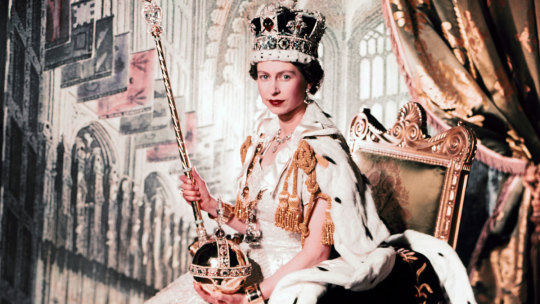
The 25-year-old Princess automatically succeeded to throne as Queen Elizabeth II after the death of her father George VI on 6 February 1952. Her dress included symbols from the Commonwealth realms, with embroidered maple leaves representing Canada (see also Emblems of Canada).
The Queen in Canada: 22 visits during her reign
The Queen made 22 official visits to Canada after ascending to the throne in 1952. Her first time here as Queen was in 1957, the last in 2010. During those years, she visited every province and territory.

Prince Philip accompanied Elizabeth on her first official visit as Queen to Canada. The couple had visited previously in 1951 while Elizabeth was a princess. She delivered the throne speech for the 23rd Parliament on 14 October 1957. She also made a televised address, the first one she had done live, during which she praised Canada's population growth and strong currency.
The Queen and Prince Philip visited Charlottetown, Quebec City and Ottawa in 1964. She was invited by the prime minister to attend the centennial of two 1864 pre-Confederation conferences in Charlottetown and Quebec City.
The year 1967 was significant for Canada. The country was marking its centennial and the Queen was there for celebrations on Parliament Hill. She delivered a speech that day, describing Canada as "a nation that has grown and prospered in an atmosphere of freedom where differences are respected and where the rights of individual men and women to work out their own salvations have never been long denied."
After their time in Ottawa, the Queen and Prince Philip travelled to Montreal, arriving there on 3 July to visit Expo 67. The Queen also visited New Brunswick and Nova Scotia on this trip.
The Queen returned to Canada in 1982 for the proclamation of the Constitution. An estimated 32,000 people came out in the rain in Ottawa on 17 April 1982 for the ceremony on Parliament Hill.

Following the signing of the document, the Queen delivered a speech, stating, "Today I have proclaimed this new Constitution, one that is truly Canadian at last. There could be no better moment for me as Queen of Canada to declare again my unbounded confidence in the future of this wonderful country."
Her 2002 visit to Canada was part of a year of celebration for the Queen as she marked 50 years as monarch. Elizabeth came to Canada as part of her Golden Jubilee tour — which also took her to New Zealand, Australia and Jamaica — and thanked Canadians for their "loyalty, encouragement and support" during her reign.
The Queen's final visit to Canada was in 2010. She visited five cities and spent Canada Day in Ottawa with about 100,000 others on Parliament Hill.

Elizabeth visited Canada more times as Queen than any other Commonwealth country. And she referred to Canada as "home" as she arrived in Halifax — a term she used throughout her reign when speaking of this country. She was Queen of Canada for almost half of the country’s existence.
An Enigmatic Personality
In her time as monarch, Elizabeth bore witness to profound changes at home and abroad, including the decline of the British Empire and decolonization of many African and Caribbean countries, along with the end of hostilities with Irish republicans.
As one of the most famous women in the world, she was also under great public scrutiny during some of the most painful moments of her life, including the death of her father, King George VI, the marriage breakups of three of her four children and the death of her former daughter-in-law, Diana, Princess of Wales.
But Elizabeth always had a keen sense of her role.
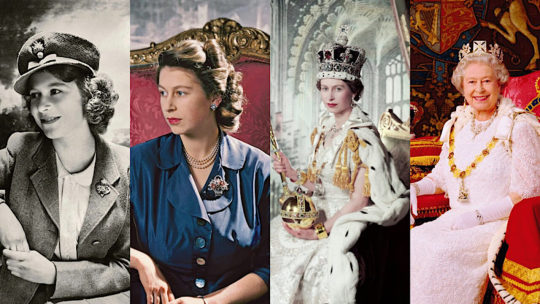
"I cannot lead you into battle, I do not give you laws or administer justice," she said during her first televised Christmas address in 1957. "But I can do something else: I can give you my heart and my devotion to these old islands and to all the peoples of our brotherhood of nations."
That sense of duty was central to her life, even before she ascended the throne. In a speech broadcast from Cape Town, South Africa, on her 21st birthday in 1947, she made that clear.
"I declare before you all that my whole life, whether it be long or short, shall be devoted to your service and the service of our great imperial family to which we all belong," she said.
Renowned as much for her composure as the colorful clothing she wore to make sure she could be seen in a crowd, Elizabeth rarely showed her true emotions in public. As a result, she was seen by many as a symbol of British resilience.

As recognizable and high-profile as Elizabeth was, however, she remained in many ways an elusive personality. She was known for her sense of humour and dry wit, but didn't do interviews and her personal views never got a public airing.
Certain interests seemed apparent — whether it was her love of horses or devotion to the corgis that would run up airplane steps with her.
Despite public debates about the necessity and future of the monarchy, Elizabeth remained a highly popular figure among Britons until her death.
In 2020, she was praised for offering a sense of calm strength and reassurance as the coronavirus pandemic continued.
During the COVID-19 pandemic, the Queen and Prince Philip isolated at Windsor Castle. Philip died on 9 April 2021, only months before his 100th birthday. The Queen and Prince Philip were married for 73 years. They had four children, eight grandchildren and 12 great-grandchildren. Queen sat alone during the funeral service, wearing a mask, at the front of St. George's Chapel before Philip’s casket was lowered into the royal vault.

Upon Queen’s death, Charles automatically ascended to the role of king. He became the 62nd British monarch and, at age 73, the oldest ever to assume the throne.
Celebrations to Mark Queen’s Journey
The celebrations to mark the Queen’s 25th anniversary as monarch began on 6 February 1977. Elizabeth spent the day with her family at Windsor Castle. Church services to mark the occasion were held all month. The full jubilee celebrations were held in London on 6–7 June.
The celebrations to commemorate Elizabeth’s 50th year on the throne in 2002 were organized around six themes: Celebration, Community, Service, Past and future, Giving thanks, and Commonwealth. Elizabeth and Philip travelled extensively, attending events in every region of the UK, as well as in Canada, Australia, New Zealand and Jamaica.
On 9 September 2015, she surpassed Queen Victoria as the longest-reigning British monarch.
In early February 2022, Elizabeth marked 70 years on the throne, an unprecedented milestone for a British monarch and the official beginning of her Platinum Jubilee.

Later that month, Buckingham Palace announced she had tested positive for COVID-19. She recovered and continued to carry out virtual engagements, along with a few in-person meetings, including with Canadian Prime Minister Justin Trudeau and Gov. Gen. Mary Simon at Windsor Castle.

While Platinum Jubilee events continued largely without her public presence, she did appear on the balcony of Buckingham Palace at the beginning and end of the celebrations in early June.
"While I may not have attended every event in person, my heart has been with you all and I remain committed to serving you to the best of my ability, supported by my family." she said in a message as the Jubilee events concluded.
"I have been inspired by the kindness, joy and kinship that has been so evident in recent days, and I hope the renewed sense of togetherness will be felt for many years to come."

2 notes
·
View notes
Text
World’s Fairs: The MBTI Chart
Because I had nothing better to do with my life than Myers-Briggs a bunch of short-lived historical showcases of culture and technology. Meh.
ISTJ: Great Exhibition of the Works of Industry of All Nations (London, 1851)
ISFJ: Expo 58 (Brussels)
INFJ: Expo 86 (Vancouver)
INTJ: Exposition Universelle, 1889 (Paris)
ISTP: 1982 World’s Fair (Knoxville)
ISFP: Expo 67 (Montreal)
INFP: Expo '74 (Spokane)
INTP: Golden Gate International Exposition (San Francisco, 1939)
ESTP: World’s Columbian Exposition (Chicago, 1893)
ESFP: 1939 New York World’s Fair
ENFP: Exposition Universelle, 1900 (Paris)
ENTP: 1964 New York World’s Fair
ESTJ: Century 21 Exposition (Seattle, 1962)
ESFJ: 1984 Louisiana World Exposition (New Orleans)
ENFJ: Louisiana Purchase Exposition (St. Louis, 1904)
ENTJ: Century of Progress (Chicago, 1933)
1 note
·
View note
Text
Holidays 4.26
Holidays
Activity Advisor Appreciation Day
Alien Day
Arbor Day (Germany)
Audubon Day
Australian Appreciation Day
Beatrix Asteroid Day
Cape Henry Day (Virginia)
Chuvash Language Day (Russia)
Common Columbine Day (French Republic)
Confederate Memorial Day (Florida)
Day of Remembrance of the Chernobyl Tragedy (Belarus)
Festival of Individual Sovereignty
Football Day (Kazakhstan)
426 Day
General Prayer Day (Denmark)
Get Organized Day
Help a Horse Day
High School Radio Day
Hug a Friend Day
Hug An Australian Day
Hug a Prom Sponsor
Huntingdonshire Day (England)
Internal Medicine Research Day
International Chernobyl Disaster Remembrance Day (UN)
International Choerm Day
International Day of Humor
International Day of the Penis
International Flamingo Day
International Seeds Day
International Shared Parenting Day
Lesbian Visibility Day
Lily of the Valley Day (French Republic)
Memorial Day of Radiation Accidents and Catastrophes (Russia)
National Ai Day
National Audubon Day
National Dissertation Day
National Drug Take Back Day
National Gabriel Day
National Garage Day
National Hand Holding Day
National Help a Horse Day
National Hit It From the Back Day
National Jason Day
National Kids and Pets Day
National No Makeup Day
National Ranboo Day
National South Dakota Day
Old Permic Alphabet Day
Parental Alienation Awareness Day
Poetry and the Creative Mind Day
Prayer Day (Faroe Islands; Greenland)
Read Me Day
Regional Autonomy Day (Indonesia)
Remember Your First Kiss Day
Resistance Day (Day of the Uprising Against the Occupying Forces; Slovenia) [26th Unless a Sunday, then 27th]
Richter Scale Day
Secretaries’ Day (Colombia)
Self-Aware Universe Day
Shared Parenting Day (Kentucky)
Shuffleboard Day
Static Cling Day
Studio 54 Day
Sultan’s Day (Malaysia)
Tartar Language Day
Underground Nuclear Test Day
Union Day (Tanzania)
Vallenato Legend Festival begins (Colombia)
Venus Day
Visakhabousa Day (Laos)
Wallabee Day
World Burlesque Day
World Intellectual Freedom Day
World Intellectual Property Day (UN)
World Pilots’ Day
YMCA Healthy Kids Day
Food & Drink Celebrations
Beer Autism Hope Day
International Macaroni Day
National Pretzel Day
4th & Last Friday in April
Arbor Day [Last Friday]
Arbrewday [Last Friday]
Childcare Professionals Day [Last Friday]
Children’s Memorial Flag Day [Last Friday]
Day of Dialogue [Last Friday]
Flashback Friday [Every Friday]
Friendship Friday [Last Friday]
Fry Day (Pastafarian; Fritism) [Every Friday]
Hairball Awareness Day [Last Friday]
Hooky Day (Argentina) [Last Friday]
International Viognier Day [Last Friday]
National Historic Marker Day [Last Friday]
National Skipping Day (UK) [4th Friday]
Swiss Beer Day (Switzerland) [Last Friday]
Undiagnosed Children’s Day (UK) [Last Friday]
World Meningitis Day [4th Friday]
World Women’s Wellness Day [Last Friday]
Weekly Holidays beginning April 26 (4th Week)
Global Youth Service Days [Last Weekend] (thru 4.28)
Interstate Mullet Toss [Last Weekend] (thru 4.28)
National Dream Hotline [Last Weekend] (thru 4.28)
National Pie Championships [Last Weekend] (thru 4.28)
Independence & Related Days
Aetosia (Declared; 2019) [unrecognized]
Karisradd (Declared; 2013) [unrecognized]
Kotland (Declared; 2020) [unrecognized]
Republic of Alba (Declared; 1796) [lasted 2 days]
Roskya (Declared; 2020) [unrecognized]
Tanzania (Union Day; Created by Zanzibar and Tanganyika merger; 1964)
New Year’s Days
New Year’s Seed Sowing Ceremony (Goddess of Fertility; Sierra Leone)
Festivals Beginning April 26, 2024
Asheville Spring Herb Festival (Asheville, North Carolina) [thru 4.28]
Astoria-Warrenton Crab, Seafood & Wine Festival (Astoria, Oregon) [thru 4.28]
Big Island Chocolate Festival (Hapuna Beach Prince Hotel; Hawaii) [thru 4.27]
Brewgaloo (Raleigh, North Carolina)) [thru 4.27]
Chicago Comic & Entertainment Expo (Chicago, Illinois) [thru 4.28]
Chicken Fried Steak Festival (Lamesa, Texas) [thru 4.28]
Clinton-Hickman County Spring Chicken Festival (Clinton, Kentucky) [thru 4.27]
Colleton County Rice Festival (Walterboro, South Carolina) [thru 4.27]
Fiddler’s Frolic [thru 4.28]
Georgia State Fair, Spring (Metro Atlanta, Hampton, Georgia) [thru 5.5]
Glen Lake Restaurant Week (Glen Arbor Area, Michigan) [thru 5.4]
Interstate Mullet Toss and Gulf Coast’s Greatest Beach Party (Orange Beach, Alabama) [thru 4.27]
Pensacola Crawfish Festival (Pensacola, Florida) [thru 4.28]
Procession of the Species (Olympia, Washington) [thru 4.27]
Sacramento Beer Week (Sacramento, California) [thru 5.5]
Sacred Heart Garden City Festival (Augusta, Georgia) [thru 4.27]
Santa Barbara Restaurent Week (Santa Barbara, California) [thru 5.5]
Shenandoah Apple Blossom Festival (Winchester, Virginia) [thru 5.5]
Striped Bass Festival (Manning, South Carolina) [thru 4.27]
Vermontville Maple Syrup Festival (St. Albans, Michigan) [thru 4.28]
Wakarusa Maple Syrup Festival (Wakarusa, Indiana) [thru 4.28]
Feast Days
Aldobrandesca (a.k.a. Alda; Christian; Saint)
Anacletus, Pope (a.k.a. Cletius) and Marcellinus (Christian; Martyrs)
Basil (Christian; Saint)
Bernard Malamud (Writerism)
The Birthday Cake (Muppetism)
Cimon (Positivist; Saint)
Cletus and Marcellinus (Christian; Martyrs)
Delphinia (Festival of Apollo; Ancient Greece)
Edward Charles Tarbell (Artology)
Eugène Delacroix (Artology)
Fairy Laughter Convention (Shamanism)
Festival of Renenutet (Ancient Egypt)
The Fixer, by Bernard Malamud (Novel; 1966)
Franca Visalta (Christian; Saint)
Get Organized Day (Pastafarian)
Giamonios (Celtic Book of Days)
Gian Paolo Lomazzo (Artology)
Hug An Australian Day (Pastafarian)
Jethro Tull Day (Church of the SubGenius; Saint)
John James Audubon (Artology)
Lucidius of Verona (Christian; Saint)
Mayan Rain Festival (Ancient Mayan)
Memorial of Our Lady of Good Counsel (Christian)
Moon Magick Day (Starza Pagan Book of Days)
Our Lady of Good Counsel (Christian; Saint)
Paschasius Radbertus (Christian; Saint)
Peter of Rates (or of Braga; Christian; Saint)
Rafael Arnaiz (Christian; Saint) [Diabetes]
Riquier (a.k.a. Ricardius; Christian; Saint)
Robert Hunt (Episcopal Church (USA))
Sacrifice to Zeus Epacrios (Ancient Greece)
Stephen of Perm (Christian; Saint)
Trudpert (Christian; Saint)
Visakh Bochea Day (Buddha Day; Cambodia)
Walpurgisnacht, Day IV (Pagan)
Lucky & Unlucky Days
Lucky Day (Philippines) [22 of 71]
Tomobiki (友引 Japan) [Good luck all day, except at noon.]
Uncyclopedia Bad to Be Born Today (because the Chernobyl meltdown began.)
Premieres
American Recordings, by Johnny Cash (Album; 1994)
Avengers: Endgame (Film; 2019)
Bear De Guerre (The Inspector Cartoon; 1968)
Belfagor, by Ottorino Respighi (Opera; 1923)
The Bridge at Andau, by James A. Michener (History Book; 1957)
The Cat Concerto (Tom & Jerry Cartoon; 1947)
Devils & Dust, by Bruce Springsteen (Album; 2005)
Dogtown and Z-Boys (Documentary Film; 2002)
Dragon Ball Z (Anime TV Series; 1989)
The Enchanted Wood, by Enid Blyton (Children’s Book; 1939)
Farewell, My Lovely, by Raymond Chandler (Novel; 1940)
4th Symphony, by Charles Ives (Symphony; 1965)
The Goose Goes South (MGM Cartoon; 1941)
Gunsmoke (Radio Series; 1952)
The Handmaid’s Tale (TV Series; 2017)
The Hip-Nut-Tist (Fleischer Popeye Cartoon; 1935)
Just One of the Guys (Film; 1985)
The Last Waltz, by The Band (Live Album & Concert Film; 1978)
Moosylvania Wish Mash or A State of Confusion (Rocky & Bullwinkle Cartoon, S6, Ep. 366; 1965)
Moosylvania Saved, Part 3 (Rocky & Bullwinkle Cartoon, S6, Ep. 365; 1965)
The Muppet Musicians of Bremen (Muppet TV Special; 1972)
Neverland, by Jim Steinman (Musical Play; 1977)
Pink Posies (Pink Panther Cartoon; 1967)
The Reluctant Recruit (Woody Woodpecker Cartoon; 1971)
Seven Samurai (Film; 1954)
The Ship Who Sang, by Anne McCaffrey (Novel; 1969)
Swing Your Partner (Swing Symphony Cartoon; 1943)
Those Were Wonderful Days (WB MM Cartoon; 1934)
Throwing Copper, by Live (Album; 1994)
The Trial, by Franz Kafka (Novel; 1925)
The Truth About Cats & Dogs (Film; 1996)
Tugboat Mickey (Disney Cartoon; 1940)
Ups ’n Downs (WB LT Cartoon; 1931)
A Waggily Tale (WB LT Cartoon; 1958)
”Weird Al” Yankovic, by Weird Al Yankovic (Album; 1983)
Today’s Name Days
Helene, Trudpert (Austria)
Kleto, Maksima, Montan, Stanislav, Višnja (Croatia)
Oto (Czech Republic)
Cletus (Denmark)
Eesi, Reesi, Teesi, Teisi, Tereese (Estonia)
Teresa, Terttu, Tessa (Finland)
Alida (France)
Consuela, Helene (Germany)
Glafyra (Greece)
Ervin (Hungary)
Alida, Bianca, Cleto, Marcellino (Italy)
Alīna, Geraldine, Rusins, Sandris (Latvia)
Dargailė, Gailenis, Klaudijus (Lithuania)
Tea, Terese (Norway)
Artemon, Klaudiusz, Klet, Marcelin, Marcelina, Maria, Marzena, Spycimir (Poland)
Chindeu, Chiril, Tasie, Vasile (Romania)
Jaroslava (Slovakia)
Isidoro (Spain)
Terese, Teresia (Sweden)
Clarence, DeMarco, Demarcus, Demario (USA)
Today is Also…
Day of Year: Day 117 of 2024; 249 days remaining in the year
ISO: Day 5 of week 17 of 2024
Celtic Tree Calendar: Saille (Willow) [Day 13 of 28]
Chinese: Month 3 (Wu-Chen), Day 18 (Geng-Shen)
Chinese Year of the: Dragon 4722 (until January 29, 2025) [Wu-Chen]
Hebrew: 18 Nisan 5784
Islamic: 17 Shawwal 1445
J Cal: 27 Cyan; Sixday [27 of 30]
Julian: 13 April 2024
Moon: 92%: Waning Gibbous
Positivist: 5 Caesar (5th Month) [Xenophon]
Runic Half Month: Lagu (Flowing Water) [Day 2 of 15]
Season: Spring (Day 39 of 92)
Week: 4th Week of April
Zodiac: Taurus (Day 7 of 31)
1 note
·
View note